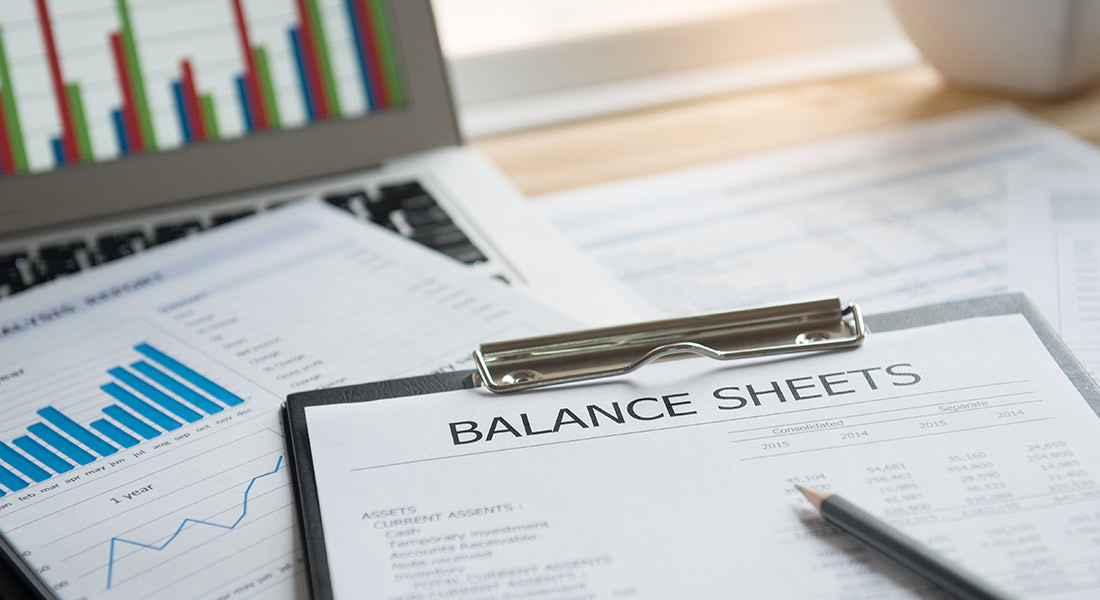Estimated reading time: 5 minutes
Soaring profits, repeat customers, and happy employees indicate that a small business is booming, right? In most cases, yes. However, many small businesses that appear to be financially fit are dealing with underlying cash flow and liquidity issues. Unfortunately, the warning signs are not always visible to business owners to see. If these issues are not discovered and addressed promptly, they can wreak havoc on a business’s finances and be challenging to resolve.
One way to evaluate the overall financial health of a business is to prepare a balance sheet at the end of each accounting period, such as month-end, quarter-end, or year-end. If you do not fully understand a balance sheet or how to prepare one, this Balboa Capital blog article is your business balance sheet guide. It has the information you need to know.
What is a balance sheet?
Simply put, a balance sheet is a comprehensive financial statement that lists all of your business’s assets, liabilities, and equity. Your balance sheet gives you a bird’s-eye view of your business’s financial position for a specific timeframe.
If you want to know how much your small business owns or how much money it owes, all you need to do is check your balance sheet. If you need additional credit or small business funding, your lender might ask to see your balance sheet. Doing so can validate your financial situation and help accelerate the funding process.
Accuracy is important.
Before you can prepare a balance sheet, you need to ensure that your accounting books are accurate and contain all necessary records, such as bank statements, expenses, and invoices. If any documents are missing or inaccurate, your balance sheet will not reflect your business’s actual worth. In addition, an erroneous balance sheet can cause you to make poor business decisions, hinder your ability to borrow, and even present you with legal problems. Therefore, hiring a business accountant or a bookkeeper is a good idea if you do not already have one on your staff.
How to prepare a balance sheet.
Preparing a balance sheet is relatively straightforward as long as your financial records are accurate and up-to-date. However, there are several steps to follow to make your balance sheet, and we walk you through them here:
- To get started, you will need to choose the reporting date and period. In most cases, the reporting date is the final day of the reporting period. For example, if you want a balance sheet for the first quarter of the year, the reporting period will be from January 1 through March 31, and the reporting date will be March 31.
- The next step is to add up all of your assets as of the reporting date. The preferred way to do this is to have two line items, one for current assets and one for noncurrent assets. Current assets include cash, inventory, accounts receivable and prepaid expenses. Noncurrent assets include property, business equipment, long-term investments, and intangible assets. Once you finish listing your current and noncurrent assets, add both line items together.
- Step three involves identifying your liabilities and separating them into two different line items, one for current liabilities and one for noncurrent liabilities. Some of the most common current liabilities include accounts payable, office rent, employee payroll, and customer/vendor prepayments. Noncurrent liabilities include long-term business loans, deferred income taxes, and long-term property/equipment leases. Follow the same step that you did with your assets and total both line items together.
- The fourth step in preparing a balance sheet is to determine your business’s equity, which is the book value of your business if all of your assets were liquidated and all of your debts were paid off. Your business’s equity will be determined based on the legal structure of your small business. If you are a solo business owner of a private company with no partners or shareholders, this will be an easy task. If you have partners, or if your business is publicly traded, your shareholder’s equity will need to be included in your balance sheet.
- The fifth and final step is to add your total liabilities to your total shareholders’ equity to see if this number is equal to your total assets. For example, if your business has $35,000 in total liabilities and $150,000 in total shareholders’ equity, the combined total is $185,000. If you have $185,000 in your total assets column, you have an accurate balance sheet.
Analyzing the results.
Once your balance sheet is complete, you need to review it to check for discrepancies. Remember, each side of your balance sheet must equal the other (total assets = total liabilities + total shareholder equity). If the two match, you are all set. However, you should double-check each line item on your balance sheet to look for potential inconsistencies or problems. For example, if your most recent balance sheet shows a sharp decrease in assets or liabilities compared to the previous period, you will see an effect on your equity. This is also a sign that your business’s financial strength is decreasing.
Summary.
Your balance sheet is one of several important financial statements that provide insight into your financial situation. Other common financial statements include profit and loss statements, income statements, and cash flow statements. Therefore, make sure you stay on top of your accounting records to ensure that your balance sheet is accurate.
The opinions voiced in this material are for general information only and are not intended to provide specific advice or recommendations for any individual.
